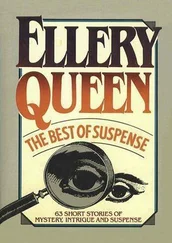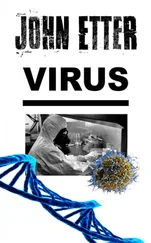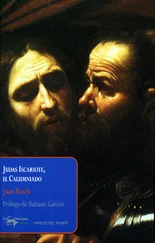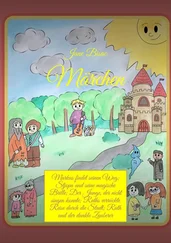When I first entered Dr. Hsiung’s laboratory in 1979, virus isolation involved inoculating litters of newborn mice or embryonated hens’ eggs, or preparing cell cultures by harvesting rabbit kidneys and chicken and guinea pig embryos—i.e., working with a virtual menagerie—as well as recovering discarded human foreskins from the obstetrics ward. Time to result was slow, and it was often said that the patient was dead or better by the time the result was received. Over the intervening years, diagnostic advances have transformed the field by allowing accurate results in a clinically useful time frame. Today, with molecular methods and rapid diagnostic tests, most results are reported within minutes to hours to 1 to 2 days. Providing sophisticated molecular tests that require minimal skill is now a reality.
With these advances have come new challenges. As tests become more sensitive, low levels of clinically irrelevant or nonviable viruses may be detected and can be misleading to clinicians. Similarly, interpreting the clinical relevance of multiple viral pathogens in the same sample is problematic. Furthermore, with numerous commercial virus detection kits now becoming available, laboratories can find it hard to decide which technologies to invest in. As diagnostic virology enters a new phase in the clinical mainstream, it is highly fitting and fortunate that this book is available to mark the first century of progress and to recount the many stories and contributions that have led us to where we are today.
Marie Louise Landry, MD
Yale University School of Medicine
With a nod to To Catch a Thief , Alfred Hitchcock’s 1955 classic mystery film, this book tells the story of the ways in which viruses are captured and identified. It is a chronicle of discovery and diagnosis, a history of diagnostic virology. It begins with yellow fever, the first human disease shown to be viral in nature. That happened in Cuba at the turn of the 20th century, when Walter Reed and the Yellow Fever Commission demonstrated that the disease was transmitted by mosquitoes. They then showed that the agent passed through a filter designed to hold back bacteria, a defining characteristic of viruses. The chronicle has continued through more than a century of historical developments, epidemics, and discoveries, coming into the 21st century with AIDS and human immunodeficiency virus (HIV) and looking into the future.
Diagnostic virology sits astride the confluence of dynamic developments in science, public health struggles with epidemics and emerging diseases, and the intensive medical care of individual patients. Virology as a science was built on the emergence of germ theory and on the developments of cell technology. Most recently, it has made unprecedented advances based on the dizzying progress of molecular biology. During the time covered by this book, terrifying epidemics have made their appearance. The influenza epidemic of 1918 to 1919 is estimated to have killed 25 to 50 million people worldwide, more than all the military casualties of World War I combined. Yet it was not until 1933 that the influenza virus was finally captured and identified in an unusual host, the ferret. The global pandemic of AIDS, which revealed itself in 1981, had by 2008 killed over 25 million people. It became the driver of molecular diagnostic techniques. In so doing, it dramatically amplified the paradigm of diagnostic virology from making a diagnosis, often after the fact, to prompt diagnosis and active disease management of individual patients.
History and commerce have had a critical hand in the advances in virological diagnosis. The first agent identified as a virus, tobacco mosaic virus, was investigated because of the threat to a commercial crop. The date of that discovery, 1892, is usually identified as the start of virology. The second virus was identified in 1899, foot-and-mouth disease virus. Similar to tobacco mosaic virus, it was examined because of a commercial threat to farm animals and cattle. Wars, too, have driven developments in virology. The demonstration of yellow fever virus had been initiated by the need of the Army to protect soldiers in Cuba in the aftermath of the Spanish-American War. Another first, the establishment of the first viral and rickettsial diagnostic lab, was a response to the incipient World War II (WWII). The Army established the lab at the Walter Reed Army Medical Center in January 1941 in Washington, DC. That is the date on which independent diagnostic virology labs, in contrast to labs devoted primarily to research, can be said to have begun.
The president during WWII, Franklin Delano Roosevelt (FDR), whose ringing words in declaring war stirred the nation, had fought both a personal and national battle against polio. It was his National Foundation for Infantile Paralysis, with Basil O’Connor, that underwrote the development of the Salk polio vaccine. In doing so, John Enders, Thomas Weller, and Frederick Robbins developed tissue culture to grow, isolate, and enumerate viruses. It gave the means to capture and identify viruses directly without having to resort to assays in animals or embryonated hens’ eggs. This was the turning point, after which discoveries in human virology and the development of diagnostic virology simply exploded. These events and other crucial developments are recounted, along with vignettes of the personalities who propelled the capacity to catch and identify viruses.
Most chapters are built around specific viral diseases, such as yellow fever in the first chapter, to demonstrate the development of a technology. In the second chapter, polio, rabies, and influenza are described to show the use of animals and embryonated chicken eggs to isolate and identify viruses. Smallpox is described in the third chapter to demonstrate that the body’s immune system, like the brain, has memory. Immunological memory provides protection from reinfection and allows the measurement of antibodies to identify a virus. Jennerian vaccination, inducing immunity, was the basis of the remarkable smallpox global eradication project. Some viral infections, like smallpox virus, rabies virus, and the herpes family of viruses, leave footprints called inclusion bodies. The detective work to recognize those footprints, the development of Rudolf Ludwig Virchow’s concepts of cellular pathology, and the beginnings of electron microscopy (EM) are unraveled in chapter 4.
Chapter 5 details the events leading up to the development of tissue culture, including FDR’s polio. Chapter 6 describes the virtual torrent of viruses captured and identified by the development of tissue culture for virus isolation and identification. At the National Institutes of Health in Bethesda, MD, the Laboratory of Infectious Diseases was a hotbed of viral discovery and disease investigation. Led by Robert J. Huebner, investigators such as Wallace Rowe, Robert Chanock, and Albert Kapikian made discovery after discovery linking viruses to illness or, conversely, showing them to be nonpathogenic passengers. The role of diagnostic virology labs at the state level, at the Communicable Diseases Center, and in university hospitals exploded from the latter 1950s onward. These laboratories defined individual patients’ illnesses, often after the acute phase had passed. They also alerted the country to the appearance of epidemics such as influenza.
The final three chapters trace developments which brought diagnostic virology into active patient management. Chapter 7 describes the clinical application of EM and of fluorescent-antibody staining. EM came into its own with several advances, notably negative staining developed by Sydney Brenner and Robert Horne, allowing the detailed description of virus architecture. Viral gastroenteritis is used as the exemplar of disease in which EM played a defining role. Fluorescent-antibody staining, developed though the imagination and tenacity of Albert Hewlett Coons, allowed “taillights” to be put on molecules. That is, the technique would allow the identification of an offending virus. This methodology was applied by Phillip S. Gardner and Joyce McQuillin in pioneering efforts at Newcastle-upon-Tyne in the United Kingdom. They aimed to provide clinicians with a “rapid viral diagnosis,” particularly of acute respiratory disease in infants and children, within 24 hours.
Читать дальше












